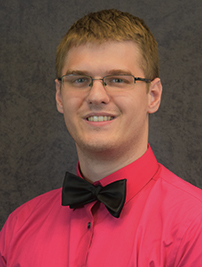Award-winning plunging jet research: Roy Pillers, CoMFRE Ph.D. student
Author: Cyclone Engineering
Author: Cyclone Engineering
 Roy Pillers is a Ph.D. student in mechanical engineering in Ted Heindel’s research group studying plunging liquid jets, work that has won multiple national awards and has potential for career-long study.
Roy Pillers is a Ph.D. student in mechanical engineering in Ted Heindel’s research group studying plunging liquid jets, work that has won multiple national awards and has potential for career-long study.